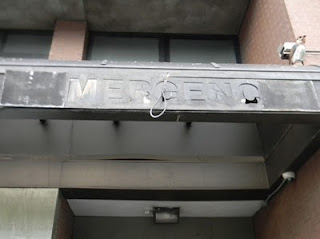Much has changed in healthcare in the last several decades – new treatments are being discovered for treating diseases, new equipment has allowed for surgeries unimaginable a few years ago, and patients are often experiencing shorter and safer hospital stays.
One thing that hasn’t faded over the years at GBMC HealthCare is the loyalty of our employees. A generation or two ago - across many industries - it was not uncommon for employees to work for only one employer during their entire career. My father for example spent more than 25 years working for a defense contractor. But today, the world is different and people change employers frequently. Thankfully, many of our employees have given many years of hard work and commitment to GBMC.
Last week, we enjoyed a wonderful celebration – the annual Employee Recognition Dinner, where we recognized nearly 500 employees for milestones in their employment with the organization. This was a very important night, because we need to recognize our people for their dedication. It’s also a reminder to me of my duty to look to create opportunities for our staff to grow within our organization.
Thirty-six employees were recognized for working at GBMC for 30 years or longer – including four for 45 years and seven more who’ve worked for the organization for 40 years! These people have been with us for almost the entire existence of the organization - GBMC HealthCare was incorporated in 1960, consolidating the operations of two specialty Baltimore hospitals: The Hospital for the Women of Maryland, of Baltimore City and Presbyterian Eye, Ear and Throat Charity Hospital, and GBMC opened its doors in 1965 as a regional medical center. That’s amazing and quite a commitment that these individuals have made to us, and in turn to our patients and the community.
It was truly humbling to think of all of the years of commitment to serving the patients of GBMC represented at the dinner by each of our 493 employees who were recognized for at least five years of service. Each service milestone is quite an accomplishment and all of us sincerely thank our staff for their commitment to GBMC and its patients over the years.
All of our employees give meaning to our mission of providing medical care and service of the highest quality to each patient leading to health, healing and hope. In addition, we hope each models our vision that to every patient, every time, we will provide the care that we would want for our own loved ones.
In addition to the 40 and 45 year milestones, we also recognized 10 individuals who have dedicated 35 years to this hospital; 16 people who reached their 30-year service milestone; 29 individuals who have been with us for a quarter of a century; 46 employees who have spent 20 years of their career at GBMC; 55 employees celebrating 15 years; 91 employees celebrating 10 and a whopping 235 celebrating five years of service.
The dinner also gave us an opportunity to think about the present and the bright future of the GBMC HealthCare system and reflect on a few of the accomplishments we have made during the last year:
- Created the Greater Baltimore Health Alliance (GBHA), a collaboration of physicians both employed by GBMC HealthCare as well as those in private practice, to integrate care delivery across the full spectrum of clinical services.
- Implemented electronic medical records (EMR) that facilitate the exchange of health information, and help coordinate care among the practices, the hospital, our hospice and other future community partners.
- Implemented computerized physician order entry (CPOE) in the hospital.
- We redesigned our quality and safety system.
- Gilchrist Hospice Care opened its new 10-bed acute care inpatient hospice center in Harmony Hall Assisted Living in the Howard County Health Park.
- Gilchrist Hospice Care and Gilchrist Greater Living was one of only 3 organizations in the country to win the prestigious Circle of Life award from the American Hospital Association.
Were you one of the employees honored at the dinner? Please share your thoughts about why you enjoy working for GBMC HealthCare.
On a final celebratory note, the GBMC family enjoyed a wonderful 11th running of the Shawan Downs at Legacy Chase last weekend. We were happy that thousands of community members, staff, and supporters, including Baltimore County Executive Kevin Kamenetz, enjoyed the thrill of steeplechase racing along with a day in the beautiful countryside. I was pleased to have the opportunity to thank many GBMC donors, who have been very generous over the past years.
The Stick Pony Race for children under 8 years benefited our Pediatric Emergency Department and with more than 70 little jockeys competing in four age groups, the event generated $22,000. The annual car raffle (a heartfelt thank you to former board chairman Charlie Fenwick and Valley Motors for their continuing support) was also a success with a local resident and grateful GBMC patient William Franswick winning the 2012 Volkswagen Passat lease. A truly gracious winner, Mr. Franswick will make a gift to GBMC while opting for the cash prize of $10,000, for which we are very grateful.
This wonderful event would not have been successful without the support of our loyal volunteers, who help put on this huge event each year. Their efforts were also important in raising $22,000 to benefit GBMC nursing programs and the volunteer office through the sale of the car raffle tickets.
Photos from Employee Recognition Dinner:









